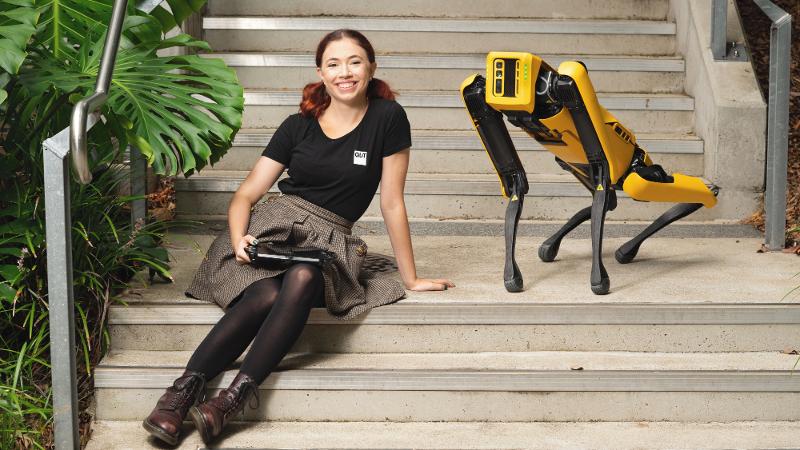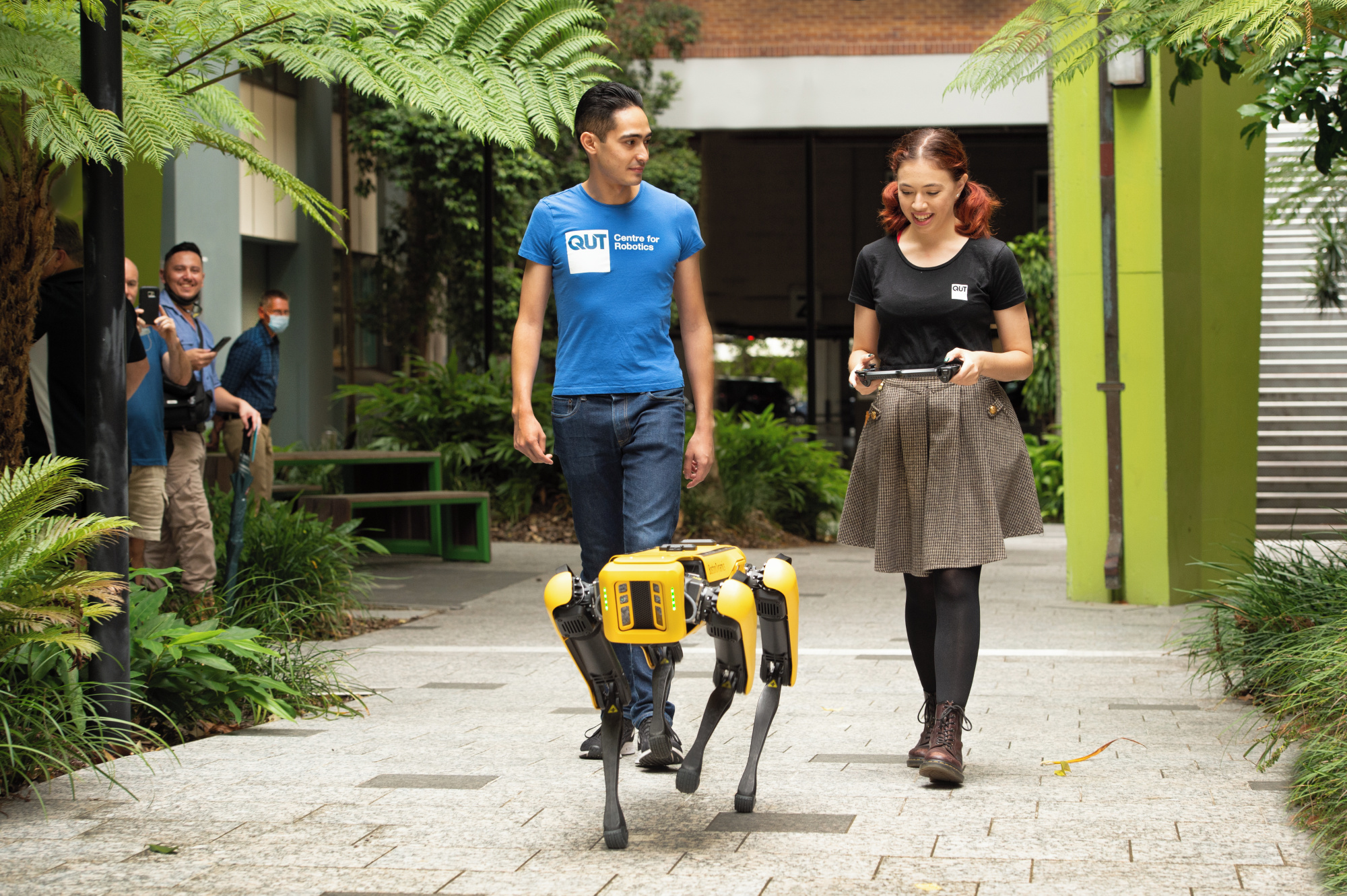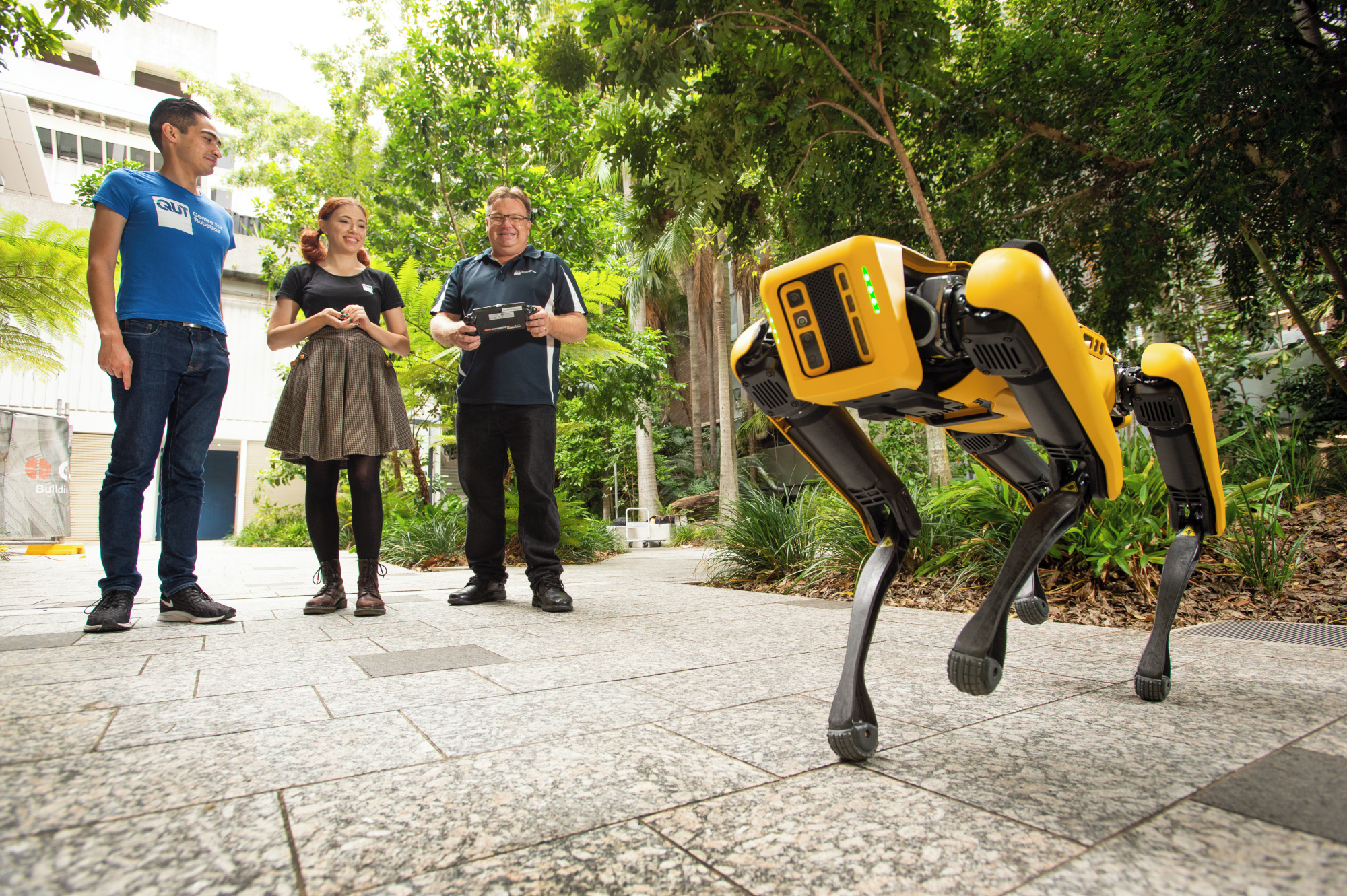
QUT robotics researchers have a new robotic best friend that is helping with a range of research projects including studying how people and robots can better interact.

Spot is a quadruped robot, which walks on four legs like a dog, and can climb stairs and traverse rough terrain. Spot, which is produced by Massachusetts Institute of Technology spin-off company Boston Dynamics, has cameras on four sides and can travel at a fast walking pace.
PhD researcher Marisa Bucolo, working with Professor Matt Dunbabin, Professor Jonathan Roberts and Associate Professor Jared Donovan, is using Spot to study how robots can signal their intentions to people.
“Robots don’t present in any sort of human-readable way – if a robot is stationary, you have no idea what it is going to do next,” Ms Bucolo said.
As part of her research project, Ms Bucolo has filmed Spot in scenarios on QUT’s Garden Point campus and manipulated it to signal its intentions in a way similar to how a dog would. She is using the footage in a study that looks at how people interpret the robot’s movements.
“If we know how people are going to react to robots, then we can better design robots to work with people,” Ms Bucolo said.
“The end goal is that if you ran into Spot in a walkway, the two of you could negotiate that interaction in a natural way without having to think about it.”
Professor Matt Dunbabin has been investigating how humans can task underwater and ground robots using sign-language. He said there was interesting research into the way people responded to robots so we can interact with them in a more natural manner.
“I think it’s really interesting how people react to Spot, because I didn’t realise until Marisa started to work with it just how expressive you can make these machines even when they don’t have a face or look like a living creature,” Professor Dunbabin said.
But while QUT researchers are looking at ways to improve the interactions between people and robots, the research shows that making robots to be more human-like is not necessarily the best solution.
“If you make robots too realistic, you can get an “uncanny valley” reaction, in which people feel robots don’t look right. It’s often better to keep them looking like a robot,” Professor Dunbabin said.
The term uncanny valley relates to the dip on a graph of human responses to robots that are almost lifelike but with enough imperfections to generate a negative reaction.
Along with looking at robot-human interactions, Professor Dunbabin is interested in how robots such as Spot could evolve into cobots that can work alongside and for humans to do some of the dirty, dull and dangerous tasks.
“I’m also particularly interested Spot’s ability to walk autonomously in rugged terrain. There are applications in environmental monitoring and surveillance that might not be conducive to humans being there – like walking through snake infested scrub or even in and around active volcanoes,” Professor Dunbabin said.
“Spot has many cameras that allow it to observe and map environments and gain new data that we might never have had the capability of doing before.”

Professor Dunbabin said these quadruped robots can also be enhanced with robotic arms or tools such as thermal cameras that could enable a robot to seek out people in a emergency situation such as burning buildings.
QUT researchers have focussed on understanding and improving robotic vision for more than a decade, and Spot is also involved in another research project using robots to see the world around them.
Research fellow Juan Sandino is working with Professor Felipe Gonzalez in using Spot for remote sensing tasks in challenging environments and designing a system to turn Spot into a digital cartographer.
Mr Sandino said Spot could be fitted with a device that could be used to create a “digital twin” of a historical site or an area that was difficult to access.
QUT’s Centre for Robotics conducts world-leading research in intelligent robotics, with research programs that include how a robot interacts with the physical world.
Centre joint director Professor Michael Milford said: "Interacting with Spot is an incredible experience, and the centre is planning to incorporate it into its extensive range of outreach and engagement activities with industry, government, and the general public including school kids."
Media contact:
Rod Chester, QUT Media, 07 3138 9449, rod.chester@qut.edu.au
After hours: 0407 585 901, media@qut.edu.au


